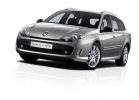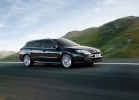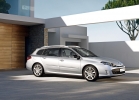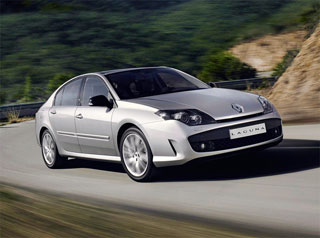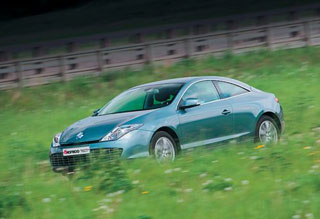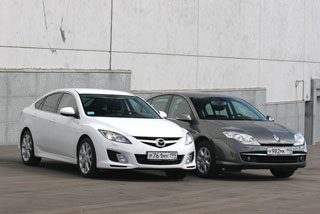Renault Laguna test drive since 2007 hatchback
Envy subject
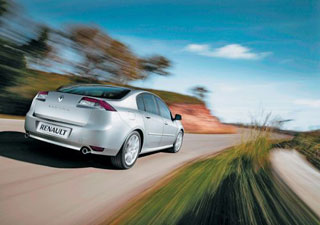 Renault Laguna GT. Price: 35,000. On sale: since April-August 2008
Renault Laguna GT. Price: 35,000. On sale: since April-August 2008 In Europe and Russia, third -generation sales Renault Laguna will start. Along with ordinary versions, customers will be offered a sports GT, which, unlike the usual option, will not be supplied to us. It's a shame, because the car is unique not only with a charged character, but also the innovative steering technology of all Active Drive wheels
The country of the third-generation test drive Renault Laguna, of course, has become France. But the place was chosen unusual, which is associated with the sports nature of the GT modification. The route was laid along the mountain roads of the picturesque island of Corsica, the birthplace of Napoleon Bonaparte.
Compared to the previous model, the appearance of the debutant has changed dramatically. The abundance of broken lines gives the silhouette aggressiveness and dynamics. It’s good or bad to say, but the fact that it is fresh and bright is a fact. The GT version is distinguished from the usual
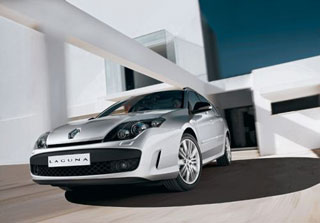 options of other bumpers with air intakes on the sides, thresholds, black mirrors, bifurcated exhaust system and special Celsium wheels in size 18. Experts say that they are developed using formula-1 technologies.
options of other bumpers with air intakes on the sides, thresholds, black mirrors, bifurcated exhaust system and special Celsium wheels in size 18. Experts say that they are developed using formula-1 technologies. There are more changes in the cabin than outside. The front panel attracts the severity of the forms. Everything is functional and convenient. The quality of the materials used is also pleasing. On GT versions, the owners will additionally receive aluminum inserts, perforated aluminum pedals, a three -spitz steering wheel, seats, upholstered with black leather Riviera, with good lateral support. The latter is very important, since Laguna can very briskly go into turns.
But even more interesting Renault Laguna GT is in its filling. First, let's talk about the engines that can be equipped with a GT version. Oddly enough, it is not alone, as it happens with most manufacturers. Buyers are offered either a diesel or a gasoline option. Each of them is good in its own way. The gasoline engine has a shelf
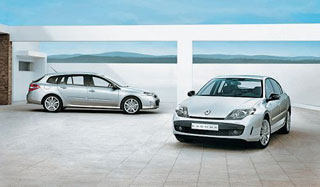 moment in the range from 2500 to 5000 min-1, which is more characteristic of diesel engines. This gives the driver a constant confident traction. The downside is that the gasoline engine is very critical of the selected gear. It is very difficult to go into an interference. If the transmission per step is higher than expected, then until the engine is spinning at least to 30003500 min-1, GT is reluctant to accelerate. If you switch to the step lower, the engine very briskly gains momentum up to a cut off of 6500 min-1.
moment in the range from 2500 to 5000 min-1, which is more characteristic of diesel engines. This gives the driver a constant confident traction. The downside is that the gasoline engine is very critical of the selected gear. It is very difficult to go into an interference. If the transmission per step is higher than expected, then until the engine is spinning at least to 30003500 min-1, GT is reluctant to accelerate. If you switch to the step lower, the engine very briskly gains momentum up to a cut off of 6500 min-1. The diesel is not so strict for the selected gear and does not have a pronounced shelf of the moment. At the same time, he begins to pull already with 1800 min-1. The cut-off trips 5000 min-1, but it makes no sense to twist it. This is just a loss of time with intensive acceleration. Optimally switch in the range of 40004500 min-1. For a dynamic driving, the driver will need to get used to the Laguna gearbox. The fact is that not quite a clear and long stroke of the lever at first causes difficulties. In the civilian version, this could be forgiven, but you expect another from sports modification.
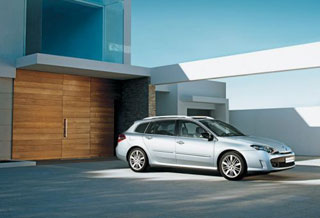 In dynamics, both engines are approximately the same. Acceleration of up to 100 km/h differs only by 0.7 s (7.8 gasoline, 8.5 diesel) with a difference in power of 25 hp. Both engines absolutely do not bother the noise in the cabin, even when moving at high speeds. Noise insulation of the new Laguna on top. Once driving a D-class car, you hardly believe in its sports capabilities, or rather, impeccable control. Many can quickly drive a large car, and not everyone succeeds in implicitly subjugating the giant. But the engineers of the Renault and Renault Sport Technologies succeeded.
In dynamics, both engines are approximately the same. Acceleration of up to 100 km/h differs only by 0.7 s (7.8 gasoline, 8.5 diesel) with a difference in power of 25 hp. Both engines absolutely do not bother the noise in the cabin, even when moving at high speeds. Noise insulation of the new Laguna on top. Once driving a D-class car, you hardly believe in its sports capabilities, or rather, impeccable control. Many can quickly drive a large car, and not everyone succeeds in implicitly subjugating the giant. But the engineers of the Renault and Renault Sport Technologies succeeded. A new Active Drive chassis with steering controls of all four wheels (4WS) has been installed on Renault Laguna GT. This allows you to confidently pass turns at higher speeds and dashingly maneuver in constrained urban conditions. What does this happen?
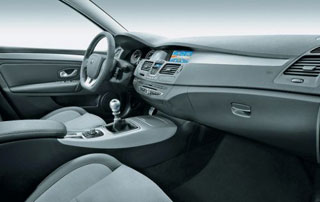 On the rear axle, an electric drive and a controller of the Japanese company Aisin are installed. The electric drive is responsible for turning the wheel to one or another angle. Information about the necessary actions is transmitted by the controller, which accumulates data from the sensors of the angle of rotation of the steering wheel and speed, as well as the target stability system. Depending on the obtained these, the rear axles change their angle. At low speeds, up to about 50 km/h, they turn in the opposite side of the front wheels. With increasing speed, the wheels begin to turn in the same direction. As a result, centrifugal forces are significantly reduced, so the car is more stable in maneuvers. The angles of rotation of the rear wheels are small only 3.5 degrees in both directions. But the total seven degrees reduce the turning radius by almost two meters from 12.05 to 10.8 m.
On the rear axle, an electric drive and a controller of the Japanese company Aisin are installed. The electric drive is responsible for turning the wheel to one or another angle. Information about the necessary actions is transmitted by the controller, which accumulates data from the sensors of the angle of rotation of the steering wheel and speed, as well as the target stability system. Depending on the obtained these, the rear axles change their angle. At low speeds, up to about 50 km/h, they turn in the opposite side of the front wheels. With increasing speed, the wheels begin to turn in the same direction. As a result, centrifugal forces are significantly reduced, so the car is more stable in maneuvers. The angles of rotation of the rear wheels are small only 3.5 degrees in both directions. But the total seven degrees reduce the turning radius by almost two meters from 12.05 to 10.8 m. The new steering system has a beneficial effect on information and feedback. This is confirmed by the numbers presented to us at a technical presentation. If earlier, to turn the wheels by 1 degree, it was required to turn the steering wheel by 16
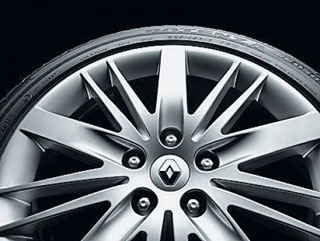 degrees, now now 2.5 degrees less. And in order for the rear wheels to deviate at the maximum 3.5 degrees, the steering wheel needs to be turned by only 12 degrees. In the movement, you can feel the work of the new Active Drive chassis according to the missing demolition of the rear axle. The car cannot be sent in a skid in general, since at an early stage a dangerous trend will be prevented by steering rear wheels. Well, if they can’t do it, then the stabilization system will come to the rescue.
degrees, now now 2.5 degrees less. And in order for the rear wheels to deviate at the maximum 3.5 degrees, the steering wheel needs to be turned by only 12 degrees. In the movement, you can feel the work of the new Active Drive chassis according to the missing demolition of the rear axle. The car cannot be sent in a skid in general, since at an early stage a dangerous trend will be prevented by steering rear wheels. Well, if they can’t do it, then the stabilization system will come to the rescue. The sports modification of Renault Laguna GT turned out to be very good: powerful engines, a balanced suspension, a clear control. The manufacturer is so confident in the new model that he increased the factory guarantee to three years or 150 thousand km of run. In Europe, sales of the sports version will begin in the very near future. As for Russia, the question of the supply of new items to our country remains open. We will wait and envy the lucky Europeans.
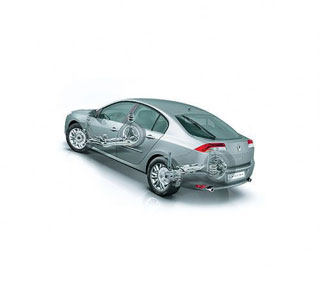 We do not stand still
We do not stand still None of the wheels in Renault Laguna GT is in place. Each is involved in maneuvering. At different speeds, this happens in different ways. On small two rear wheels turn in the opposite direction from the front. If the speed is above 50 km/h, then they turn in the same direction. The system is called Active Drive (4WS) or, otherwise, the steering of all wheels. It allows you to increase the resistance of the car at times during maneuvering. At high speeds, centrifugal forces are reduced, and, as a result, the speed of turning turns increases. At low speeds, the car becomes more turntable. What can be judged at least by the radius of the turn, which became two meters less. Such results were achieved by installing an electric drive and a 4WS system control unit. The first responds directly to the rotation of the wheels, and the second, accumulating the data of ABS and the target stability system, gives a signal about the required corner of rotation. The corners are not so large, only 3.5 degrees in both directions. But, as the tests show, this is enough to radically change the behavior of the car.
Driving
The GT version has a balanced suspension and good dynamic indicators. There are no complaints about management. The complaints can only cause a gearbox with long and fuzzy moves. It is worth getting used to the mode of its work on a particular motor.
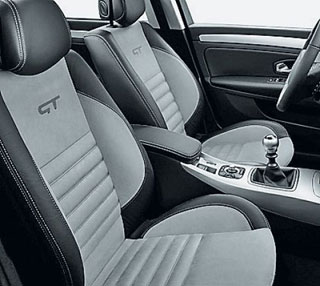 Salon
Salon The salon attracts solidity, novelty and the quality of finishing materials. The seats with good lateral support deserve attention.
Comfort
Despite the sporting nature, a trip to GT will enjoy not only the driver, but also passengers. Renault Laguna GT does not bother with excessive shaking and rolls. The abundance of free space at the back and the volume of the luggage compartment are pleasantly pleased.
Safety
In addition to various passive security systems, a number of active security systems are already installed in the database.
Price
Not determined.
Advantages and disadvantages
+ Excellent handling, comfortable suspension.
- Long and insufficiently clear moves of the gearbox lever.
Specifications
Mark and model - Renault Laguna GT
Dimensions - 4695x1811x1445 mm
Engine - gasoline, 1998 cm3, 205 hp/5000 min -1
Transmission - mechanical, 6 -speed
Dynamics - Max 232 km/h; 7.8 s to 100 km/h
Competitors - Ford Mondeo, Mazda6
Our opinion
The car has incorporated some technologies worked out on real sports pains. In addition, the novelty received a unique Active Drive chassis, a balanced suspension and good motors. The factory guarantee was increased to three years. It's a shame that the fate of this car in the Russian market is still vague. Let's hope that it will still appear in the glass windows of Russian showrooms.
Author: Maxim Egorov
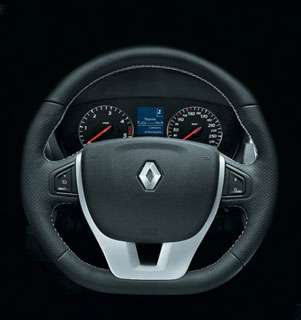
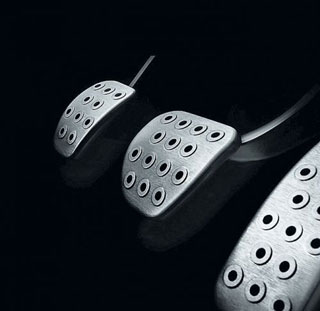
Source: Magazine 5 wheel [May 2008]
Video Test Drive Renault Laguna since 2007
Renault Laguna crash tests since 2007
Test drive by Renault Laguna since 2007
Renault Laguna Crash Test since 2007
Krassh Test: Detailed Information36%
Driver and passengers
10%
Pedestrians
41%
Children-passengers



